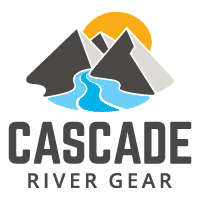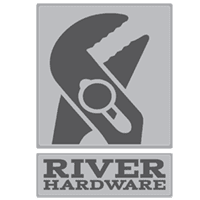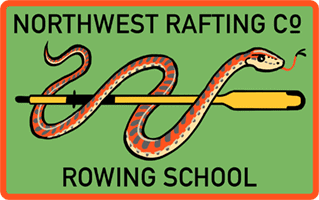Pro Tip: Planning And Packing For A Fishing Trip Pt. 2
We are back with Jesse from Sage Fly Fishing to talk about gear!
When combining fly fishing with a multi-day float trip, I take a minimalist approach to my fishing gear. I try hard to limit my pile to the essentials, keeping in mind that this is a river trip, not specifically a fishing trip. You certainly want the right gear, but not too much of it.
Gear List
Here is my fly fishing packing list
- One four-piece fly rod and tube/case
- One reel with fly line and tapered leader
- One pair polarized sunglasses
- Net (optional)
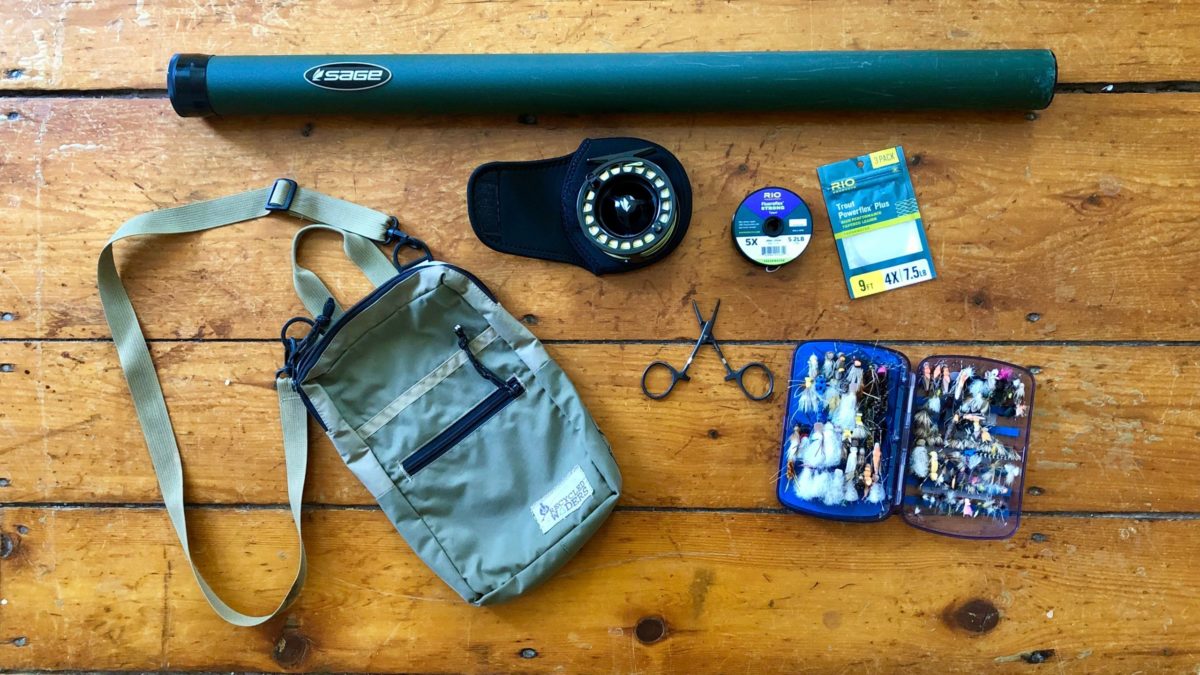
Fly Fishing Kit
My small fishing pack contains the following gear
- 1 fly box
- 2-3 extra tapered leaders
- 2-3 spools of tippet
- 1 pair of forceps with scissors
- Fly floatant (if floating on a trout river)
- Strike indicators (if floating on a trout river)
Selecting A Rod
Just like boats, there’s different fly fishing tackle for different rivers, different seasons, etc. So when it comes to choosing the specific fly rod, reel, line, and flies for the float, your before-the-trip-research is key. Chapters of books have been written on how to choose the right set up. If you’re looking for a new setup or are unsure which setup to bring on your river trip, start by chatting with your outfitter and your local fly shop.
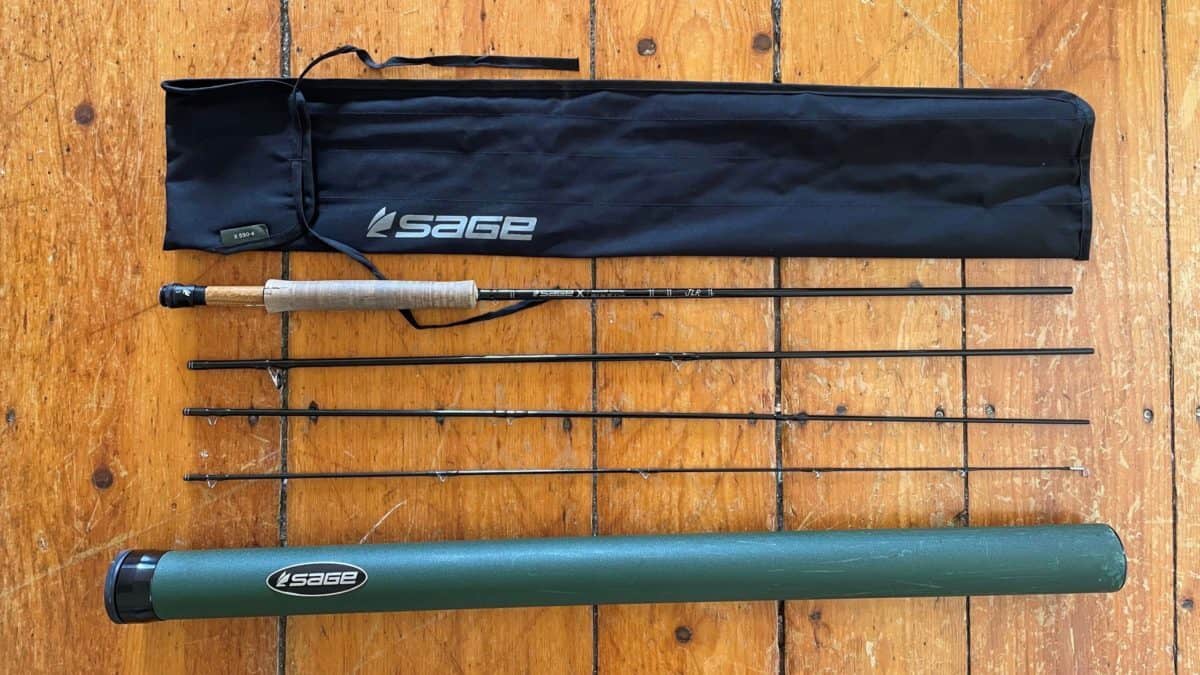
5 wt Rod
Fly rods are designated by their length and ‘weight’ (aka stiffness/strength). Reels and lines have corresponding weights. To keep it simple:
- For trout rivers (like the Middle Fork of the Salmon River), use a 9-foot, 5- or 6-weight rod
- For steelhead and salmon rivers (like the Rogue River), use a 9-foot, 7- or 8-weight rod
Selecting A Reel And Line
Find a reed with an adjustable drag that’s sized for your rod weight. For fly line, pick a weight-forward floating one that’s the same weight as your rod. Tapered leaders, use a 9’ 4X leader for trout. Fishing steelhead and salmon use a 9’ 2X leader. A great way to go if you’re in the market for a new setup is a rod-reel-line-leader combos; both Sage and Redington offer these in a variety of sizes.
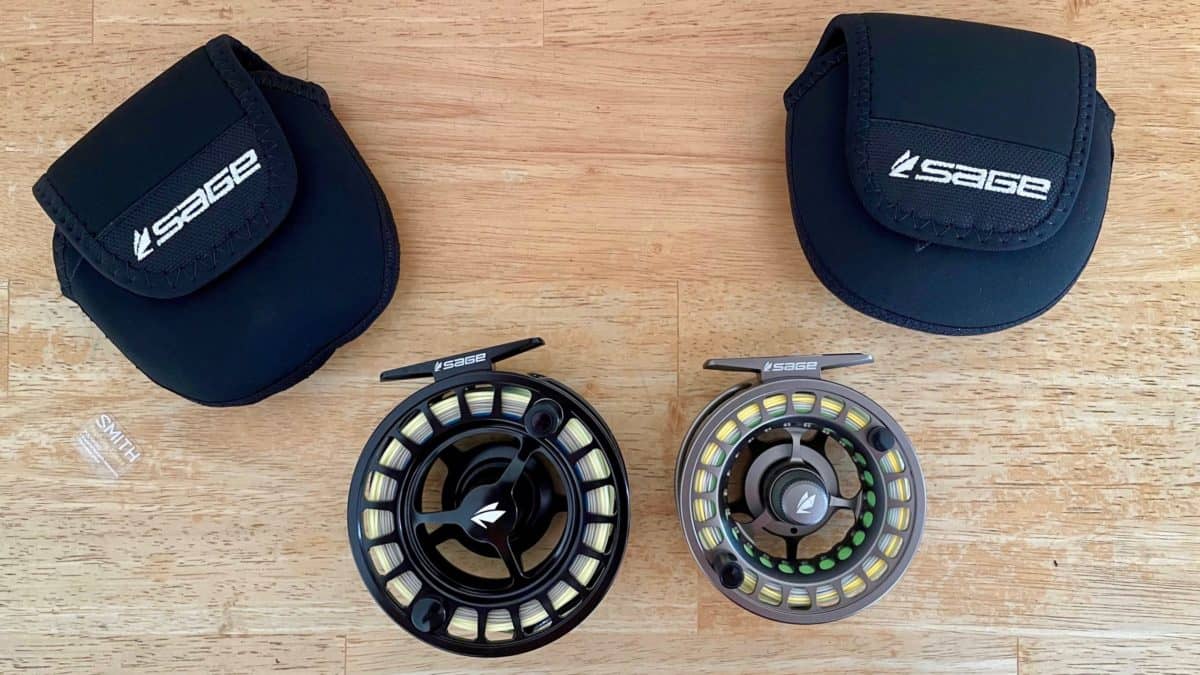
8 and 5 wt Reels
Rod Cases
There are rod cases that are designed to fit both rod and reel. These are handy as they save you from taking off and putting on your reel every time you fish. The downside (if you consider it one) is that the tube is then asymmetrical, which could be annoying when you pack your boat. A symmetrical rod tube will work great. Just get something that will protect your rod.
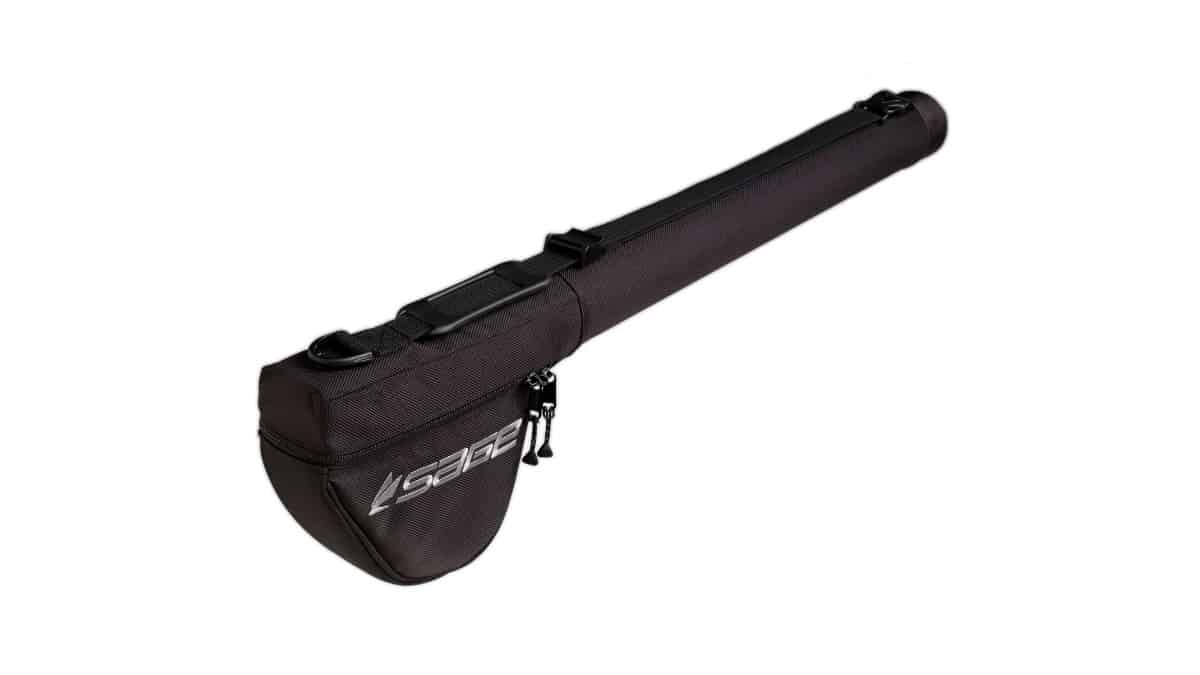
Rod and Reel Case
Pro Tip: I prefer to bring just a rod tube, and keep my reel in my fishing pack
Fishing Packs
I think the best size pack is the one that fits all your accessories and little more. Brands like Fishpond, Patagonia, and Simms all make great versions. The biggest item to go in your pack is your fly box. I will admit – I own way too many flies and when I’m in my drift boat for a day of fishing, I bring hundreds (thousands?). But when on multi-day river trips, I limit my supply to one box.
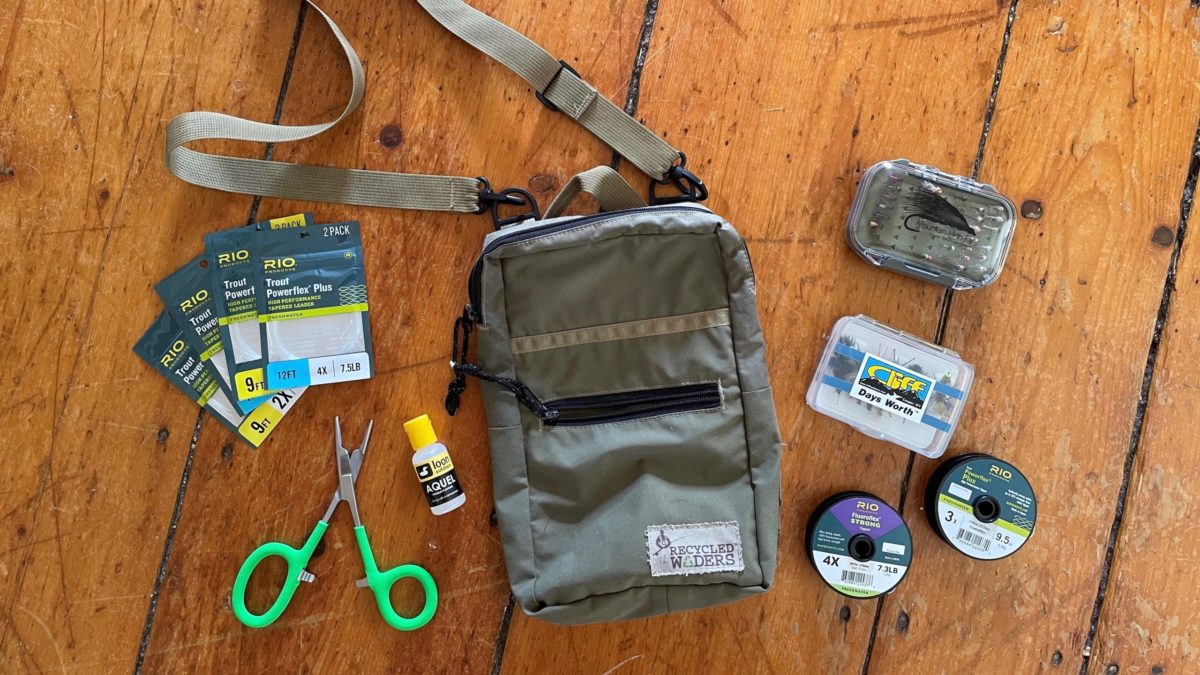
Fishing pack items
Flies
A well packed packed and well organized fly box will hold more than enough flies for a river trip. Asking the local fly shop will be the best folks to help decide what to bring. On Rocky Mountain freestone trout rivers (like the Middle Fork), the fish are opportunistic feeders, so fly patterns need not be complicated. An easy way to cover your bases is a pre-packed fly assortment like the Basic Trout Assortment or the Hopper Dropper Assortment.
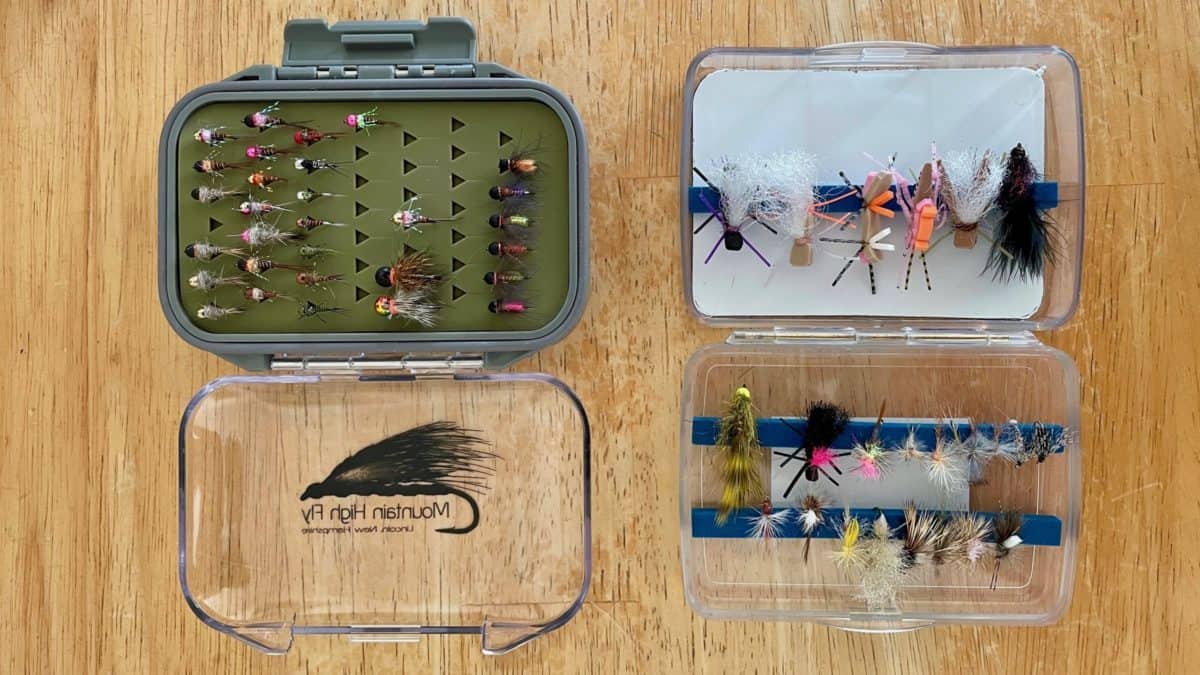
fly boxes
When you do assemble your selection of flies or when you’re tying one on, I highly recommend (also required in some places) pinching the barbs on the hooks. This is easily done with your forceps. Doing so ensures that you can easily remove the hook from the fish’s mouth and also limits size of the hook-injury to the fish so that you can quickly release fish back to the water with as little harm as possible
Extras
I like to have an extra tapered leader or two, plus a couple spools of tippet as well. A must-have is a pair of forceps to help remove flies from fish mouths. You’ll also need something to trim your tippet when tying knots.
Pro Tip: I like to get forceps that also have an integrated pair of scissors
A few other helpful accessories would be floatant – to keep your dry flies floating. A strike indicator or two and split shot – for when you’re fishing with nymphs. Loon Outdoors is a great, Oregon-based fly fishing company that offers floatants, strike indicators, and split shot.
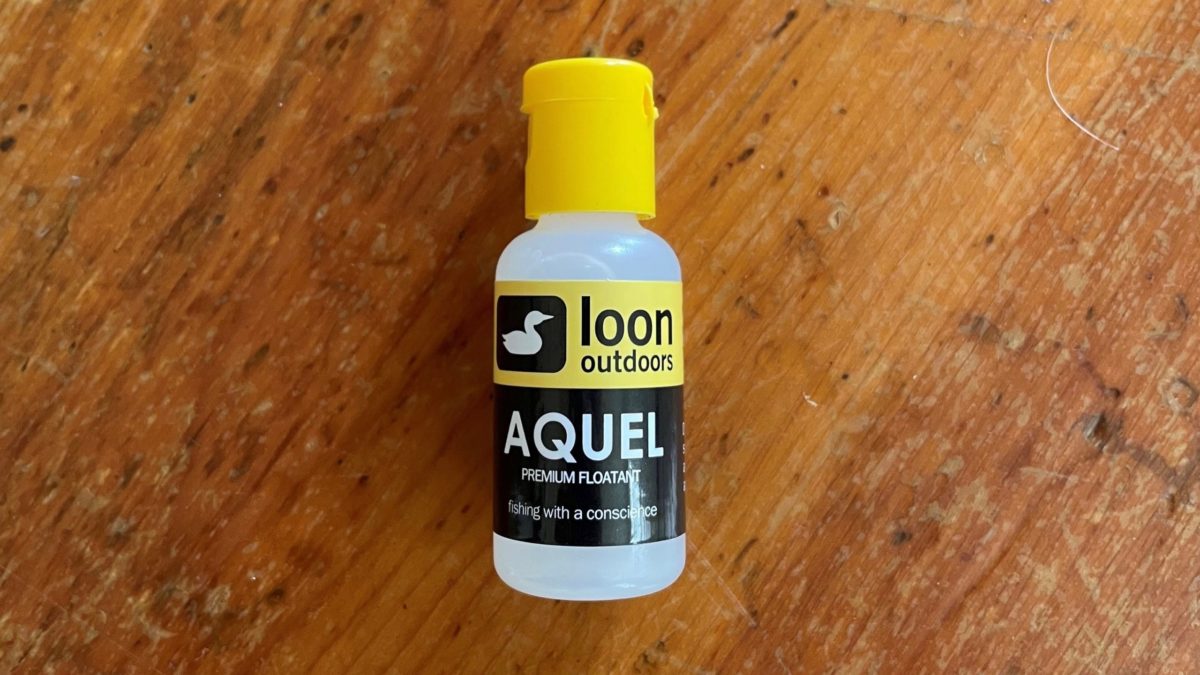
Loon Floatant
Pro Tip: You can get away without the split shot if you carry weighted nymphs. And, you can get away without the strike indicators if you have some big, high-floating dry flies!
Don’t forget your fishing license! I stuff mine in my pack and also save a screen shot on my phone. Some states even have an app you can download to keep track of any important documents.
Optional
Another piece of gear that is worth speaking to is a net. When it comes to safe and responsible fish handling, a net is the best way to ensure that the fish you catch are treated ethically. They allow you to land the fish quick and then keep the fish in the water while you remove the hook to release them. The downsides to the net are packing and carrying it. Experienced anglers can get away without a net if need be, but for beginning and less-experienced anglers, I recommend having a net if at all possible. Fishpond makes a really good net. They’re lightweight, durable and the net bags are made of rubber, which is better on the fish than mesh.
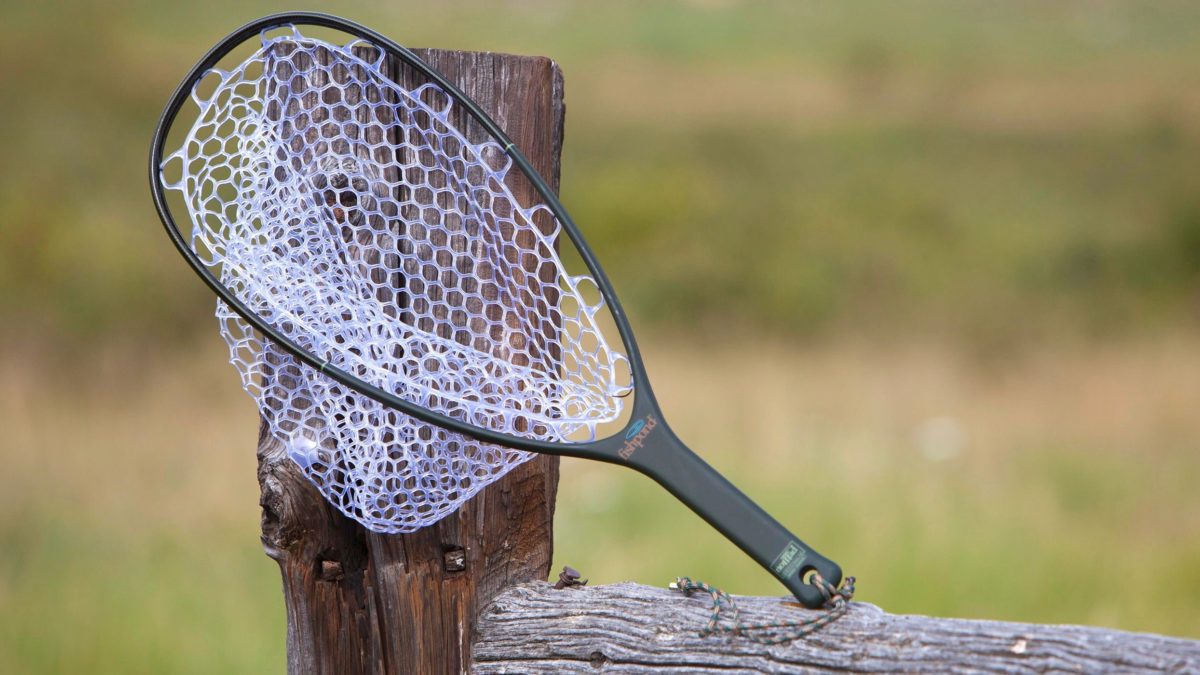
Fishpond Net
Keeping your fishing kit simple will help you get more fishing in. The most gear you bring the more time you will spend trying to decide what to use.

